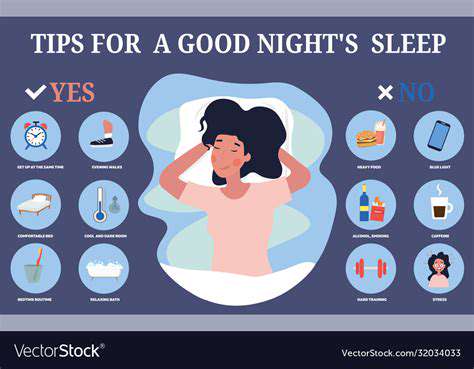How to Create a Relaxing Evening Routine at Home
Understanding the Importance of a Calming Atmosphere
Crafting a serene environment transcends mere decoration; it's foundational for mental and emotional balance. Spaces designed for tranquility can dramatically lower stress levels, sharpen concentration, and cultivate inner peace. Whether transforming a home office, bedroom, or meditation corner, thoughtfully curating your surroundings creates harmony in daily living. This involves mastering the delicate dance between illumination, acoustics, color palettes, and tactile elements.
The Role of Lighting in Setting the Mood
Lighting reigns supreme when establishing ambiance. Warm, filtered illumination from table lamps with amber-hued bulbs casts a soothing radiance that softens edges and invites repose. Harsh ceiling fixtures should be avoided—their clinical brightness overstimulates rather than soothes. Play with layered lighting solutions: fairy lights draped artfully or strategically placed LED candles can work wonders.
Thoughtful lamp positioning amplifies the calming effect. Installing dimmer switches proves invaluable, permitting precise light adjustment as daylight fades or activities change. This flexibility allows your space to evolve with your daily rhythms.
The Impact of Sound on Relaxation
Acoustic environment profoundly influences our sense of calm. Disruptive noises sabotage relaxation and concentration, triggering stress responses. Counter this with carefully curated soundscapes—perhaps a playlist of ambient piano melodies, the recorded whisper of ocean waves, or the gentle hum of a white noise device. Some find the liquid murmur of a tabletop fountain creates perfect auditory balance.
Incorporating Calming Colors and Textures
Visual and tactile elements work in concert to shape our experience. Opt for a palette of washed-out neutrals, sage greens, and misty blues—colors scientifically shown to lower blood pressure and heart rate. Introduce organic materials: unfinished wood surfaces, river-smoothed stones, or living greenery. These natural accents ground us psychologically.
Don't underestimate texture's power. A chunky knit throw, deep-pile area rug, or linen drapery provides comforting tactile stimulation that signals safety to our nervous systems.
The Power of Natural Elements in Creating Tranquility
Biophilic design principles prove remarkably effective. A potted peace lily, fresh eucalyptus stems in a vase, or reclaimed wood shelving creates subtle connections to the natural world. These elements satisfy our deep evolutionary preference for organic environments. Maximize exposure to daylight and fresh air circulation—both proven mood enhancers.
Establishing a Routine for Enhanced Relaxation
Consistency transforms a space from merely pleasant to truly therapeutic. Develop rituals that leverage your carefully designed environment—perhaps morning sunlight yoga or evening journaling by lamplight. These predictable patterns create psychological safety, allowing your nervous system to fully surrender to the tranquility you've created.
Mindful Moments: Incorporating Relaxation Techniques
Deep Breathing Exercises for Stress Relief
Conscious breathing practices before bedtime act as a neurological reset button. When performed consistently, these techniques engage the parasympathetic nervous system, triggering measurable physiological changes: oxygen saturation rises, pulse steadies, and vascular tension eases. The 4-7-8 method proves particularly effective—inhale quietly through the nose for four counts, hold for seven, exhale completely through pursed lips for eight. This patterned breathing disrupts anxiety cycles by focusing cognitive resources on breath control rather than worry.
Diaphragmatic breathing offers another pathway to calm. Lying supine with one hand on the abdomen, visualize filling an imaginary balloon in your belly with each inhalation. This engages the diaphragm fully, maximizing oxygen exchange while massaging internal organs. The resulting physiological changes create an unmistakable sense of grounded presence.
Progressive Muscle Relaxation for Physical Tension Release
Modern life leaves many carrying unconscious muscular tension—clenched jaws, raised shoulders, tightened glutes. This systematic tension-release practice begins with the feet: curl toes tightly for ten seconds, then release abruptly while mentally scanning for lingering tightness. Progress upward methodically—calves, thighs, abdomen, hands, arms, shoulders, facial muscles. The contrast between tension and release trains the body to recognize and discharge stored stress.
Advanced practitioners can isolate specific muscle groups—perhaps only the left trapezius or right masseter. This precision allows targeted release of chronic tension patterns. Many discover they've been maintaining low-level contractions in certain muscles for years without awareness.
Mindful Meditation for Calming the Mind
Contrary to popular belief, meditation isn't about thought suppression but about changing our relationship to mental activity. Begin by anchoring attention to physical sensations—perhaps the weight of the body on the surface beneath you or the temperature of air entering the nostrils. When thoughts arise (as they inevitably will), practice observing them like clouds passing across a sky—present but not requiring engagement.
Over time, this metacognitive awareness creates psychological space between stimulus and response. Regular practitioners often report decreased emotional reactivity and increased tolerance for discomfort. Even five minutes daily can rewire neural pathways associated with stress response.
For those new to practice, guided meditations provide helpful structure. Many quality apps offer sessions tailored specifically for pre-sleep relaxation, often incorporating body scans or visualization techniques.
Tension cephalalgia represents one of the most prevalent headache variants, frequently manifesting as unilateral cranial discomfort. The pathophysiology often involves sustained contraction of pericranial muscles combined with central sensitization of pain pathways. Clinical presentation typically includes a band-like pressure sensation accompanied by cervical stiffness. While generally bilateral, some cases demonstrate marked laterality. Early recognition permits targeted intervention addressing both muscular and psychological contributors.












